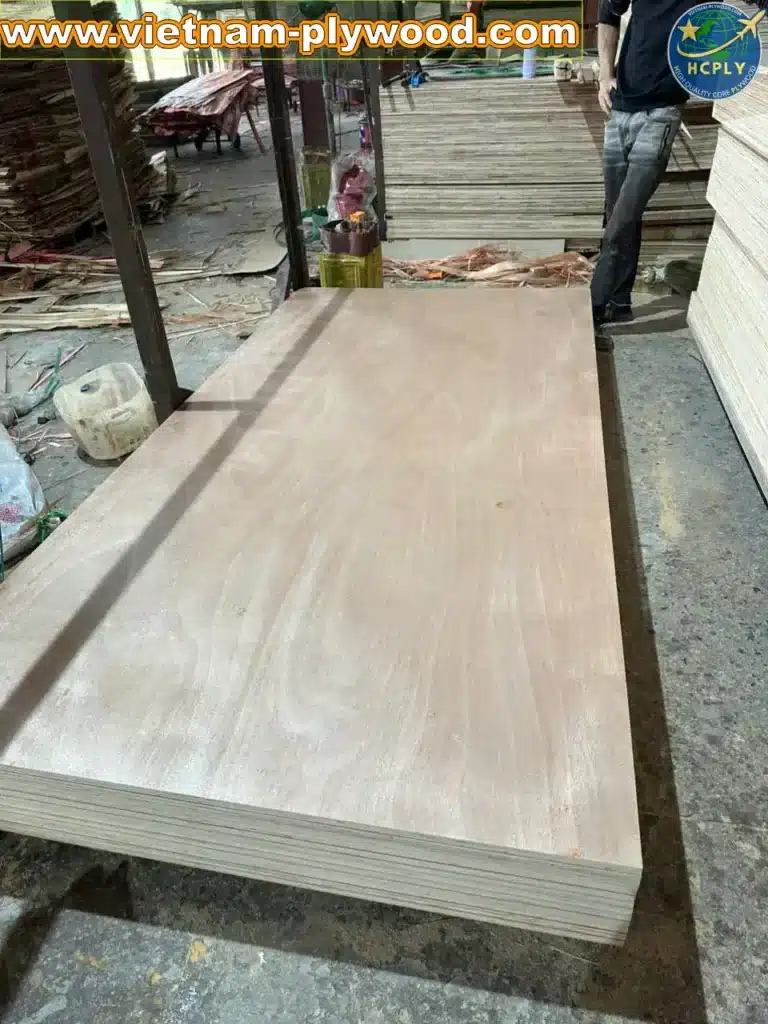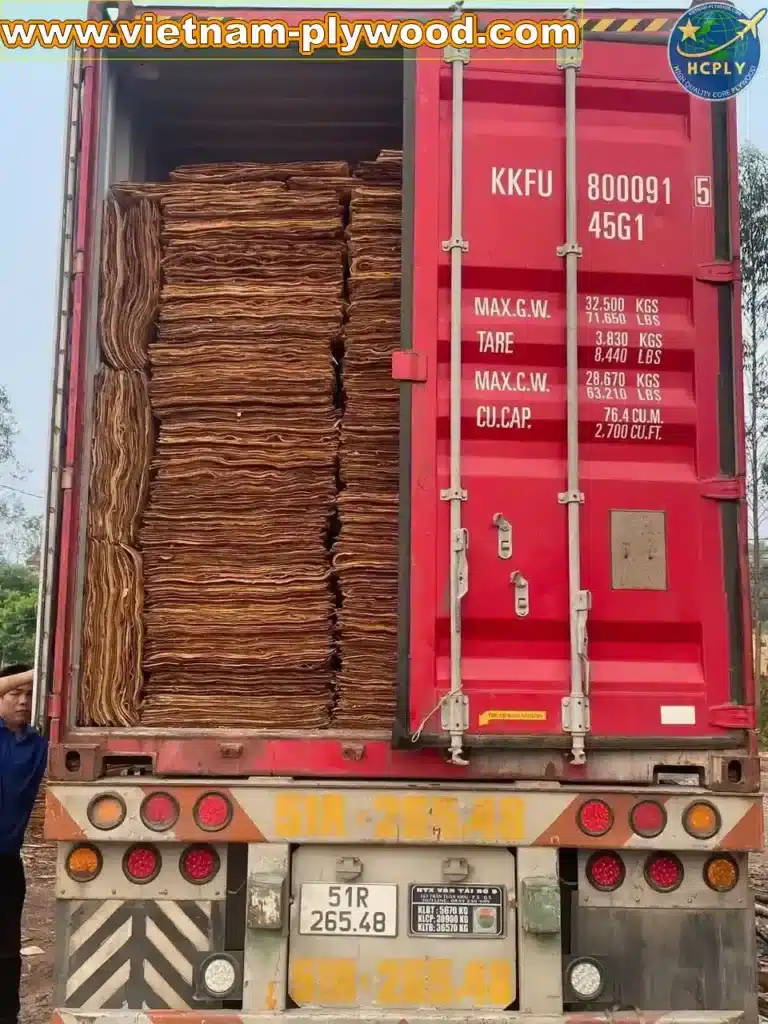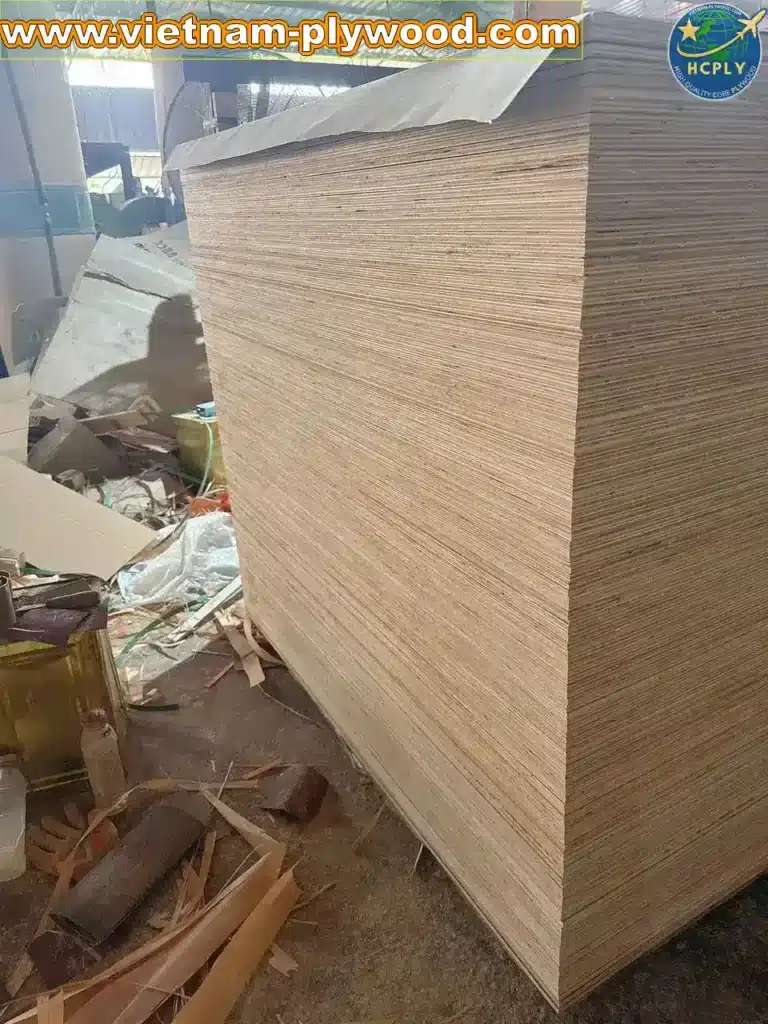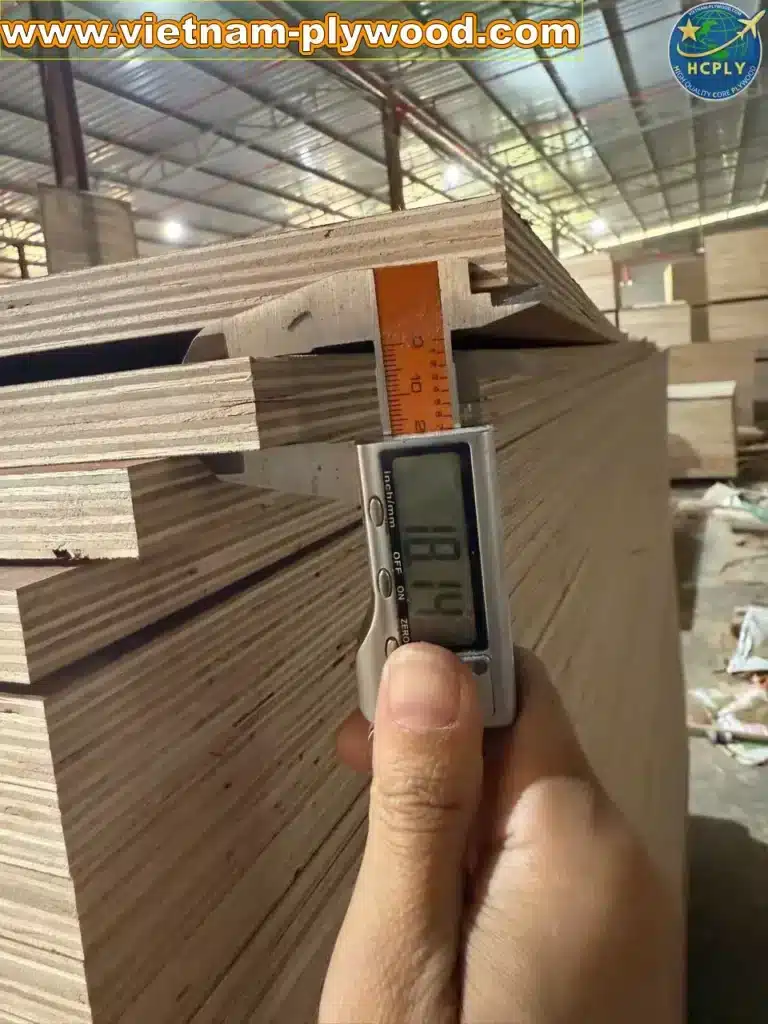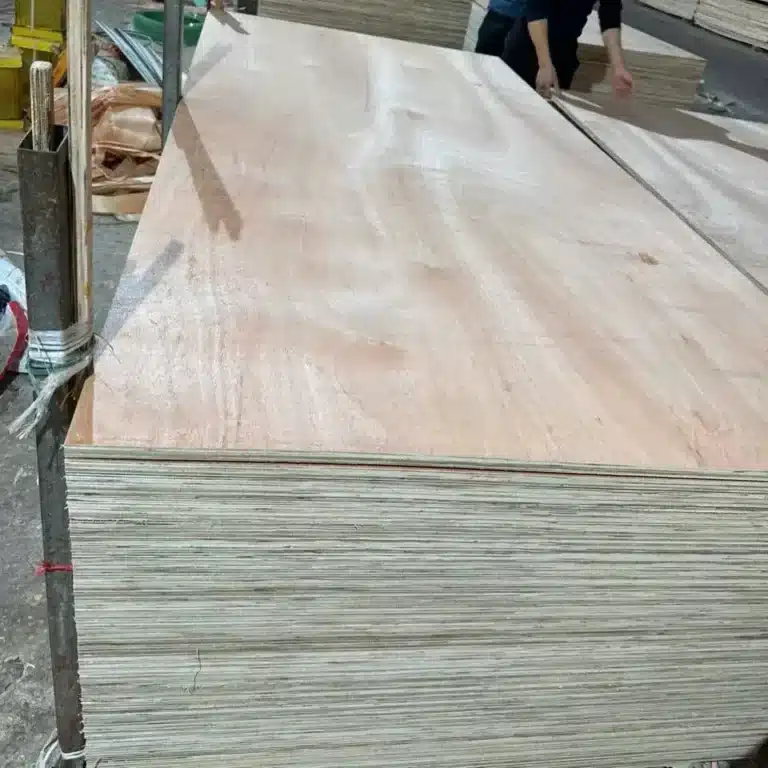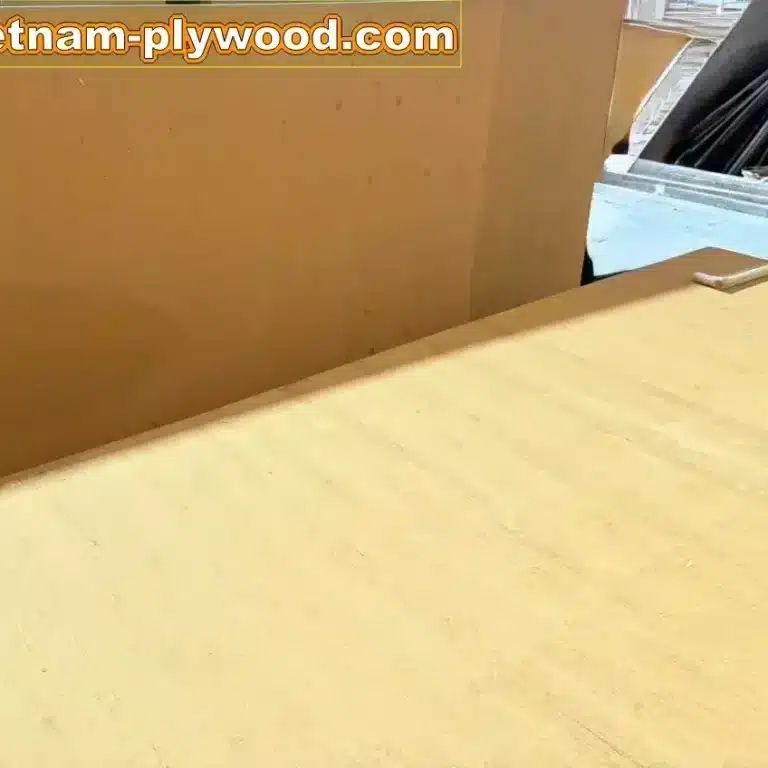How to Identify Good Core Veneer in Vietnamese Plywood
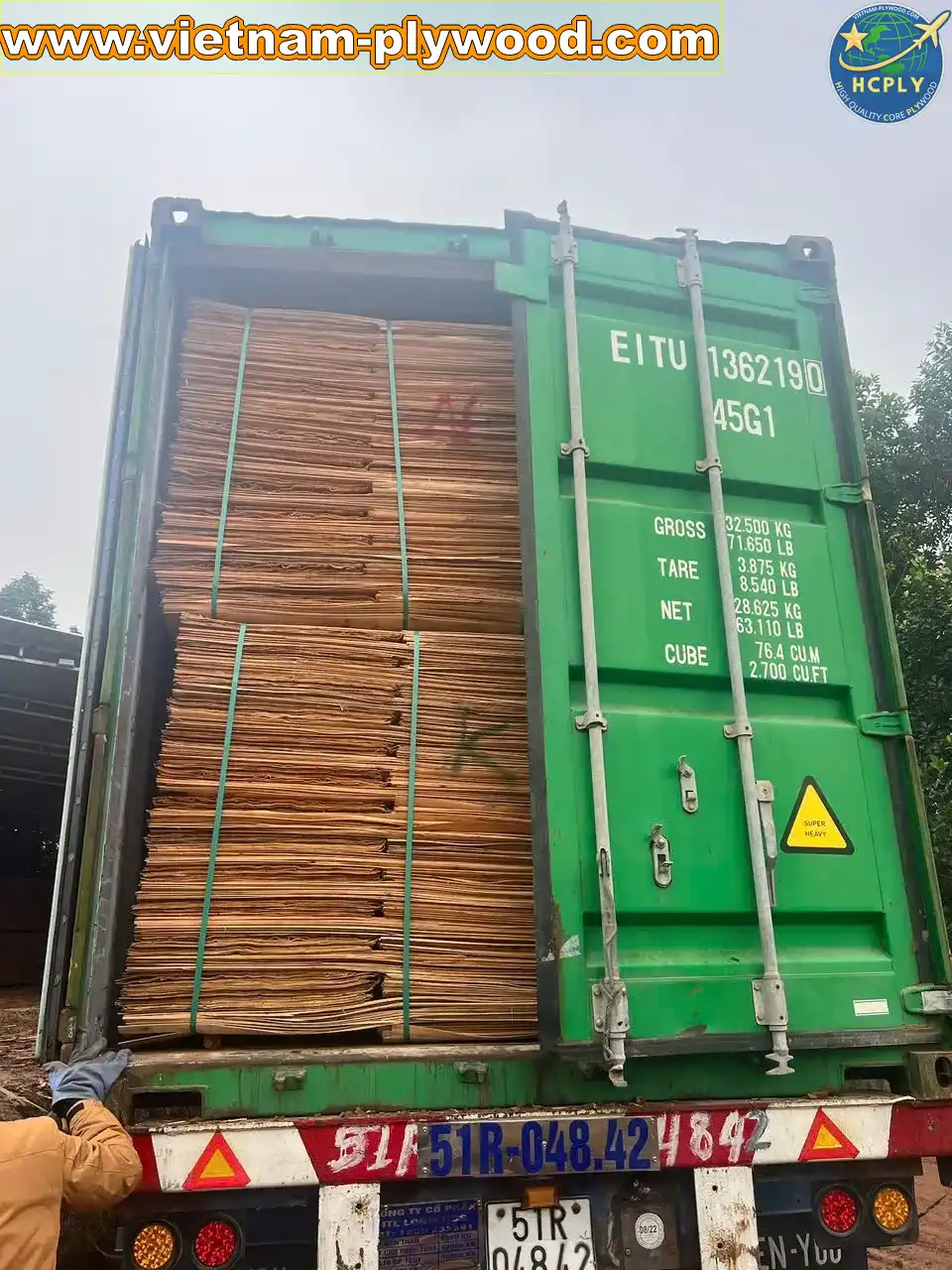
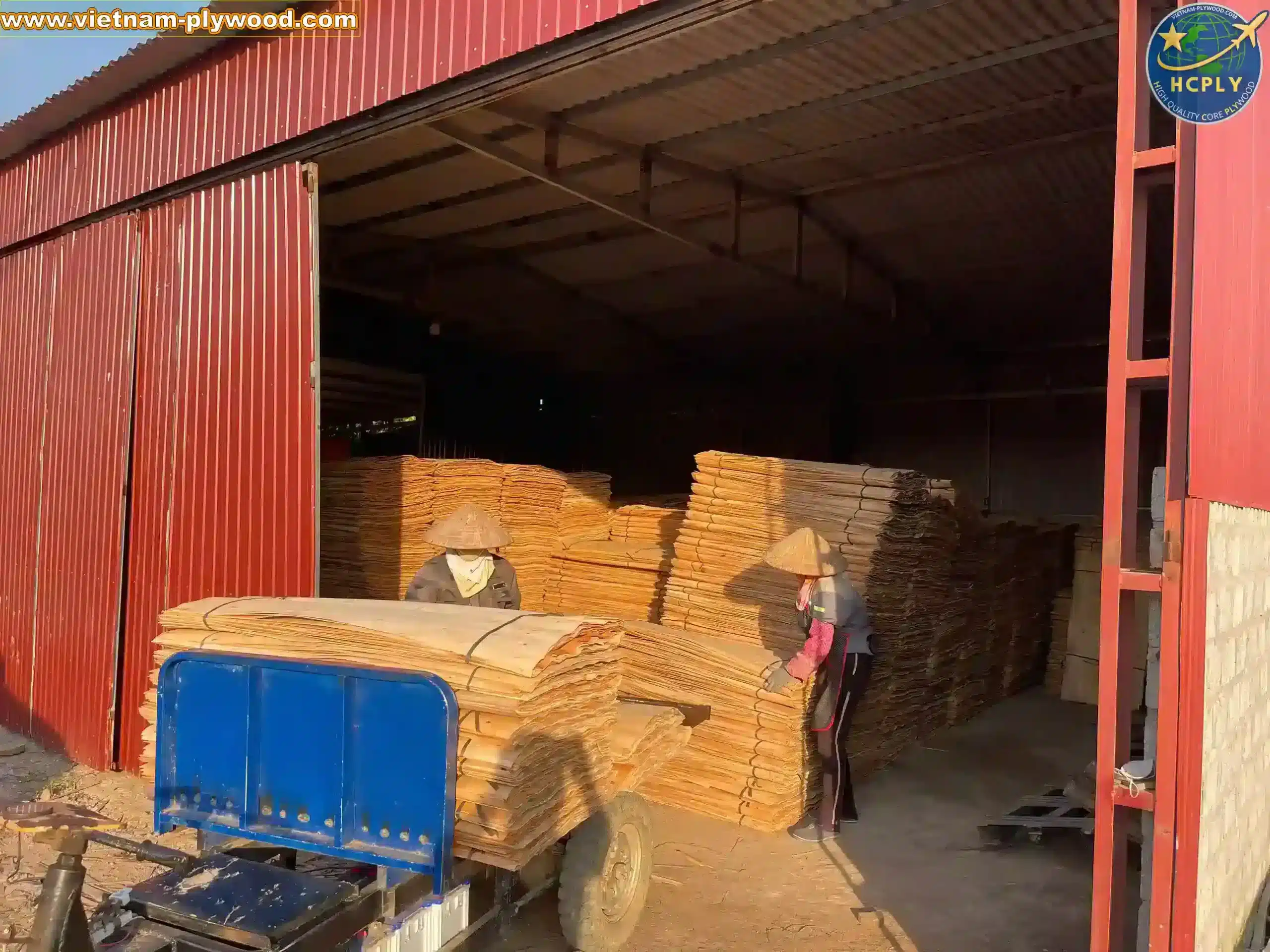
🏆 1. Introduction – The Importance of Core Veneer Quality
In plywood, the core veneer forms the majority of the panel’s volume and is responsible for its load-bearing capacity. Even if the face veneer is flawless, poor-quality core veneer can compromise the product’s strength and lifespan. Learning how to identify good core veneer in Vietnamese plywood is essential for importers targeting high-performance applications.
🎯 2. What Defines “Good” Core Veneer
Good core veneer quality Vietnam meets these basic requirements:
- Uniform thickness across each sheet
- Consistent moisture content before pressing (typically 8–12%)
- Minimal gaps or overlaps between sheets
- Clean, smooth surface free from debris or bark
H3: Key Benefits of High-Quality Core Veneer
- Better bonding between layers
- Reduced risk of warping or twisting
- Improved resistance to mechanical stress
💎 3. Visual Inspection – Step-by-Step Guide
The first step in a plywood core inspection guide is a detailed visual check:
- Check veneer color consistency – uneven color may indicate moisture variation.
- Look for core gaps – gaps larger than 3mm reduce strength.
- Inspect for knots and patches – small tight knots are acceptable; large open knots are not.
- Check veneer edges – clean cuts indicate precise peeling and handling.
To identify good core veneer Vietnam plywood, buyers must familiarize themselves with various quality indicators.
H4: Pro Tip
Use a flashlight at an angle to reveal hidden gaps or overlaps inside the core layers.
📦 4. Physical Testing Methods
While visual checks are important, physical tests confirm actual performance:
- Tap test – tap the panel with a hammer; hollow sounds may indicate voids.
- Bend test – flex the panel slightly to check for uniform resistance.
- Shear test – cutting a small sample can reveal internal bonding and veneer alignment.
One crucial aspect of how to identify good core veneer Vietnam plywood is understanding its role in overall product quality.
🛠 5. Common Defects in Poor-Quality Core Veneer
- Delamination due to poor bonding or contaminated surfaces
- Excessive overlaps causing uneven thickness
- Thin spots that weaken structural integrity
- Improperly dried veneers leading to mold or fungal growth
H3: Why These Defects Matter
Structural defects may not be visible after pressing but can cause failures during use, especially in humid climates or under load.
🔍 6. How Vietnamese Manufacturers Achieve Good Core Quality
Leading factories in Vietnam use:
- Strict veneer grading before assembly
- Precision rotary peeling machines
- Kiln drying with controlled temperature and humidity
- Automated core assembly lines to ensure alignment
📌 7. FAQ – Common Buyer Questions
H3: Q1 – Can core veneer defects be repaired?
Minor gaps can be patched, but extensive defects require replacing the sheet to maintain panel integrity.
H3: Q2 – How many core layers should good plywood have?
In our guide, we emphasize the importance of knowing how to identify good core veneer Vietnam plywood.
Identifying good core veneer Vietnam plywood requires a thorough understanding of visual indicators.
Depends on thickness – for 12mm plywood, typically 7–9 layers; more layers improve stability.
H3: Q3 – Is it possible to inspect the core without cutting the panel?
Partially – by checking the panel edges and using light at an angle, but full inspection often requires cutting a sample.
Many resources are available for those looking to identify good core veneer Vietnam plywood.
For a successful project, knowing how to identify good core veneer Vietnam plywood is necessary.
📈 8. How Core Veneer Quality Affects Pricing
High-quality core veneer increases manufacturing costs due to better logs, advanced machinery, and longer drying cycles. However, it reduces claim rates, improves customer satisfaction, and extends product life.
💬 9. Expert Tip from HCPLY
Understanding the properties of veneers can help you identify good core veneer Vietnam plywood.
“The face veneer sells the plywood, but the core veneer determines if the customer comes back.” — David, Export Project Leader, HCPLY.
🌟 10. Closing Thoughts – The Hidden Strength of Plywood
In the identify good core veneer Vietnam plywood process, the real quality lies beneath the surface.
“True strength is often unseen.”
Choosing plywood with a strong, defect-free core ensures performance, safety, and long-term value for your projects.
Prior knowledge of how to identify good core veneer Vietnam plywood can make a difference.
Buyers who know how to identify good core veneer Vietnam plywood have an advantage in negotiations.
To effectively identify good core veneer Vietnam plywood, a systematic approach is recommended.
Utilizing expert tips can aid in your journey to identify good core veneer Vietnam plywood.
With practice, you can master how to identify good core veneer Vietnam plywood confidently.
In summary, knowing how to identify good core veneer Vietnam plywood is crucial for success.
The ability to identify good core veneer Vietnam plywood can significantly impact your project outcomes.
Ultimately, effective strategies to identify good core veneer Vietnam plywood can save costs and improve quality.

